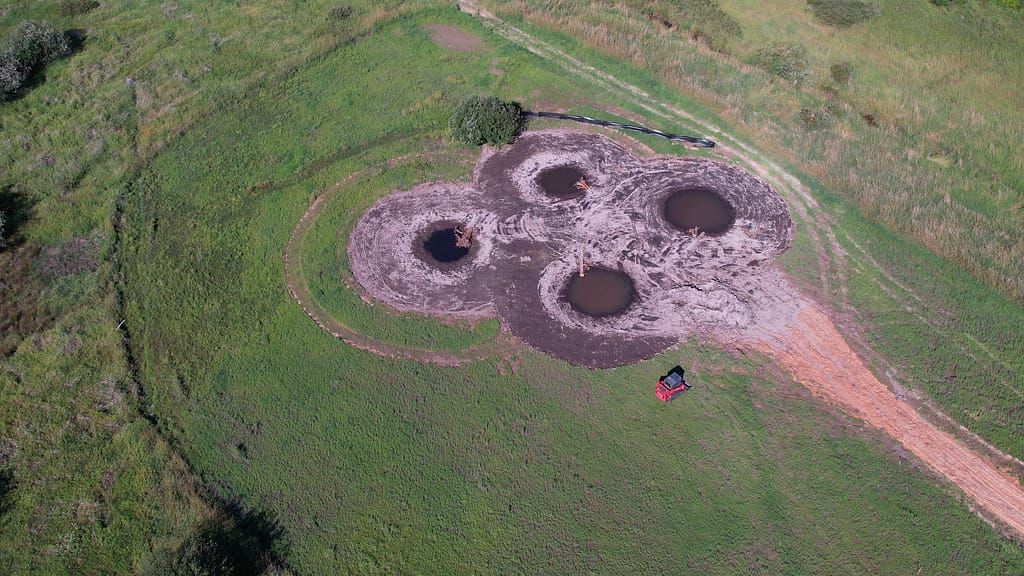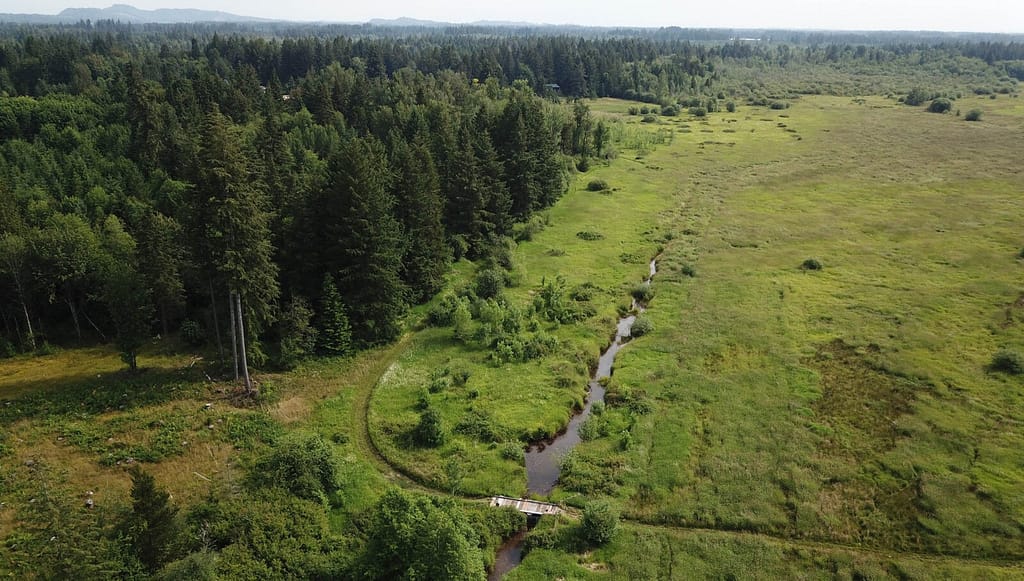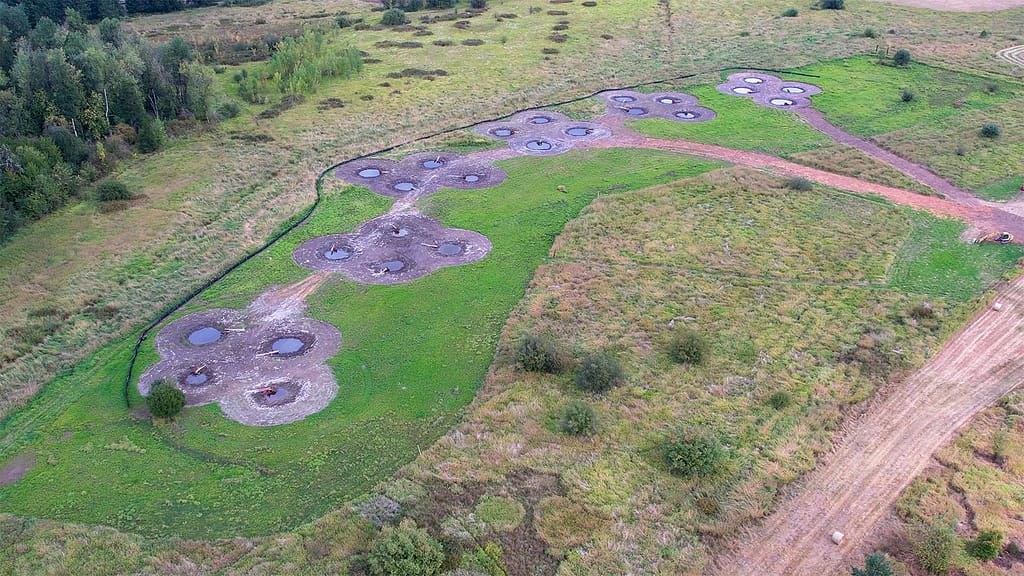It’s a sweltering summer day near Littlerock. And in spite of the heat, the ordinarily serene Blooms Preserve is bustling with Capitol Land Trust (CLT) staff, biologists, volunteers, and earth-moving equipment. The people and machinery are here for one reason: to improve wetland habitat for a state endangered species called the Oregon spotted frog. This project involves a series of dug pond clusters that will hold water year-round, even on hot days like this after months of minimal rainfall.
- The first of the six pond clusters, Mike Melton.
Located within the eastern section of the Black River watershed, much of the 142-acre Blooms Preserve is a wetland. But even wetlands can dry out in the summer. And that’s bad news for the State Endangered Oregon spotted frog.
The Oregon spotted frog is a charming aquatic frog species that today is only found in a handful of watersheds in small, isolated populations. The Black River watershed is one of the last strongholds of the species in Washington State. The species was added to the State Endangered Species List in 1997 after its rediscovery after they were thought by scientists to be extinct.
“The Oregon spotted frog is struggling to maintain stable populations,” explains US Fish & Wildlife biologist Nick George. “This species of frog evolved to spend a vast majority of its life in water and is only found in aquatic systems that retain water all year. Over the years though, changing weather patterns, invasive species, and human modifications to these systems have made large areas of its historical range uninhabitable. No habitat, no frog.”
Today, CLT and key partners are working against the clock to return the frog’s habitat to a sustainable one. CLT purchased Blooms Preserve in 2018 and expanded it with another purchase in 2020. Immediately after that CLT began seeking funds to enhance the Oregon spotted frog’s breeding and summer wetland habitat and secured funding from the Washington Coastal Restoration and Resiliency Initiative and the Chehalis Basin Aquatic Species Restoration Plan.
- Blooms ditch facing east, 2018.
When it was dug roughly 100 years ago, Blooms Ditch created a channel that drained the naturally occurring flood plain, causing the once rich wetland to dry up more frequently. To improve year-round access to water, the Blooms Preserve restoration plan calls for a series of 24 ponds along Blooms Ditch. Each pond has a shallow breeding shelf around the outside and a deeper middle portion for the summer months when water is less abundant. Large woody debris placed around the ponds creates hiding spaces for small creatures.
- Blooms Ditch and project area, facing east, September 2023, Mike Melton.
Another challenge faced by this population of frogs is the presence of a nonnative grass called reed canary grass. Its tall, dense stands shade out this sun-loving frog species and reduce the amount of good breeding and tadpole habitat. Reed canary grass also outcompetes the native plants that are crucial to healthy wetland habitats.
As the rains set in this fall and winter, the areas surrounding the ponds and areas along Blooms Ditch will be planted with native vegetation. Native plants create the foundation for healthy wetland habitat, beginning with insects. Insects that adult frogs prey upon eat and breed on native plants that are largely missing from this system. As tadpoles, they eat algae and other organic material coming from native plants in and around the water. Tadpoles and adults themselves become a scrumptious meal for animals like great blue herons and belted kingfishers.
- Oregon spotted frog eggs, USFW T. Waterstrat.
“Oregon spotted frogs are an important link in wetland ecosystems,” says CLT Executive Director Dave Winter. “Across their traditional geographic range here in Washington they face significant challenges that affect their access to suitable wetland habitat. Without action, this population at Blooms Preserve is at risk of dying out. If there is something we can do to prevent this from happening, then we have to try.”
This project was made possible through collaboration with partners that are invested in making a difference in the future of the Oregon spotted frog. Partners include:
- Center for Natural Lands Management
- CLT volunteers Tom Terry, Ian Stoner, Doug Ryan, Mike Melton, and Claudine Reynolds
- Recreation and Conservation Office who administers the Aquatic Species Restoration Plan and Washington Coastal Resilience and Restoration Initiative grants
- Salix Environmental Services
- Sound Native Plants
- Streamline Earthworks
- US Fish & Wildlife Service
- Waterfall Engineering
- WA Dept. of Fish & Wildlife
- WA Salmon Recovery Funding Board
Follow CLT on Instagram and Facebook for updates on this important project.





